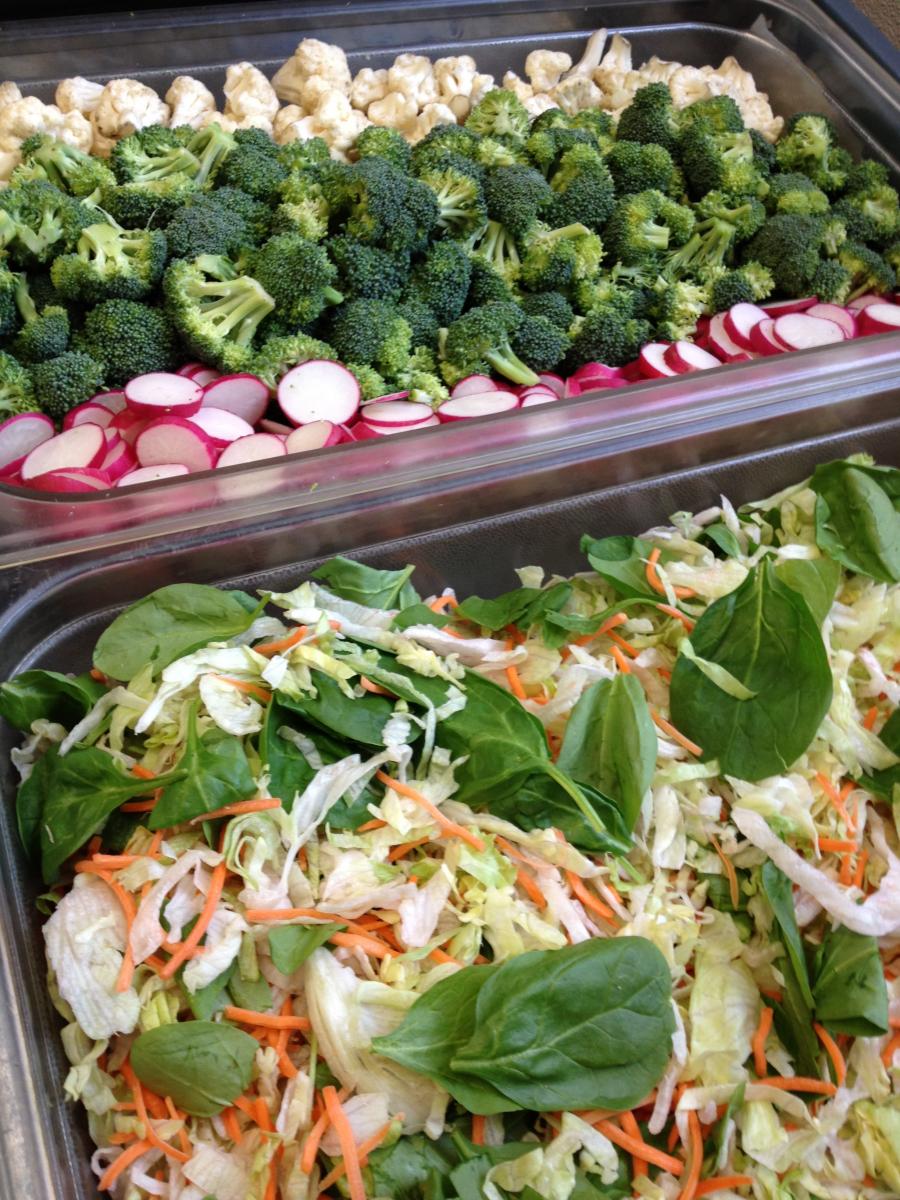Voting with Their Forks in Montana
Even though Jennifer Nerison-Montague, the School Food Service Director in Kalispell, Montana, doesn’t mention her Master’s degree in nutrition, you can tell she’s well-versed in the subject by the way she talks about the relationship between the school cafeteria and the curriculum.

“We’re listening to the students about what to serve and added spinach and radishes, and the colors of these items also help our salad bars pop with appeal,” says Jennifer Nerison-Montague of Kalispell, Montana.
“What we serve in the cafeteria,” said Nerison-Montague, “needs to support what is being taught in health class.”
That’s why she was happy to see the school meal pattern changes in 2012. She and her staff started the changes gradually, rather than delivering drastically different foods all at once. They saw the new guidelines as an opportunity to serve healthier meals with USDA’s support, and including the students’ feedback is helping ensure that healthy foods are getting eaten.
“Kids jumped right into the new foods,” she said, “and I tell them, ‘you’re voting with your fork--if you eat it, we’ll serve it again.’ “
“All our students (k-12) have the opportunity to eat from the salad bar,” she said. “It used to only offer iceberg lettuce, carrots, celery and cauliflower. We’re listening to the students about what to serve and added spinach and radishes, and the colors of these items also help our salad bars pop with appeal.”
“Our kindergarten teachers are committed to helping their students through the line,” she said. “They say it pays off with better behavior and less sick kids due to better nutrition.”
Salad bar offerings include edamame and hummus varieties, including ingredients such as lentils and butternut squash in addition to the usual garbanzo beans. Nerison-Montague says the blend with the butternut squash is about 2/3 garbanzos to 1/3 butternut squash.
“The squash adds a touch of sweetness and a really appealing orange color.”
Nerison-Montague is a guest speaker at a middle school health class every year, explaining the art and science behind the cafeteria menus. As part of the class, she conducts a survey—middle school is a good time to gauge kids’ preferences—covering subjects such as food favorites, quality, a la carte choices, and customer service. Interns from the local community college help to collect and assess the responses. The results inform purchases, menus, recipes, plating and more.
This year, the nachos got a makeover. The students liked them, but they were served once a week and the ingredients weren’t the healthiest combination. Now, nachos are served once a month, with lentils added to the ground beef and just a sprinkle of grated cheese. Students like this version, and they know it’s healthier for them.
Nerison-Montague said all the media last fall raised questions, even if parents agreed with the idea of serving healthier foods to kids in healthier quantities.
“Being able to point out that the changes allowed us to get more foods locally was a plus in answering those concerns,” Nerison-Montague said.
See other blog posts in this series:
- Go Outside, Play this Labor Day Weekend
- A Fresh (Fish) Spin on an Old Concept
- It's Time to Rejuvenate Your Fruit Intake!
- School Disctricts Show Positive Trends on Nutrional Policies, Physical Activity
